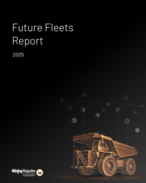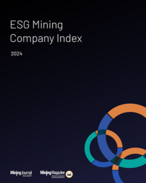The Wandoan project now boasts a coal resource of more than 2.5Bt with the recently completed prefeasibility study including an increase of more than 470Mt in measured and indicated resources.
Xstrata also increased resources at its open cut Ravensworth West and Cumnock areas in New South Wales with a jump of 300Mt.
From recent acquisitions, Xstrata said the Ravensworth longwall mine (formerly Newpac), the Tahmoor longwall mine, and the Mangoola open cut mine, all in NSW, contributed a combined increase of more than 300Mt to the group’s reserves.
As of June 30, 2008, Xstrata said it had 18.7Bt of total coal resources, including total coal reserves of 3.6Bt, “equivalent to a nominal life of 28 years at 2008 mining rates”.
Production
Of the 85.5Mt of coal production for 2008, Xstrata’s Australian thermal coal output accounted for 40.2Mt, jumping almost 15% from 2007.
The group’s Australian operations produced 6.9Mt of coking coal and 5.4Mt of semi-soft coking coal. Semi-soft output decreased 17%.
In a sign of how good 2008 was overall for the coal sector, Xstrata received an average free on board export price of $US95.6 per tonne for Australian thermal coal, a whopping 86.72% higher than the $US51.2/t achieved in 2007.
Xstrata also capitalised on sky-high coking coal prices, the company fetching an average FOB export price of $US232.5/t, up 237% on 2007.
The overarching Xstrata group ended last year with some $US4.7 billion in attributable profit, excluding certain items such as discontinued operations.
Earnings before interest, taxes and amortisation (EBITA) were $US9.7 billion, 11% lower than record profitability achieved in 2007.
The London-listed company added the refinancing of $US5.5 billion of debt means no significant requirements until 2011.
Xstrata has made a number of moves to adjust to the slump in the commodities markets over the past months, with the major coal cutback coming in Australia with suspension of the Oaky No. 1 longwall mining operation.
Xstrata group chief executive Mick Davis noted the impacts of the ongoing global financial crisis.
“The financial crisis has produced a marked lack of visibility into short-term economic activity, and as such, the outlook for 2009 is uncertain,” he said.
“Investment in infrastructure is set to increase during 2009 and 2010, reflecting the significant stimulus packages announced by many major governments which prioritise commodity-intensive investment in many cases.”























